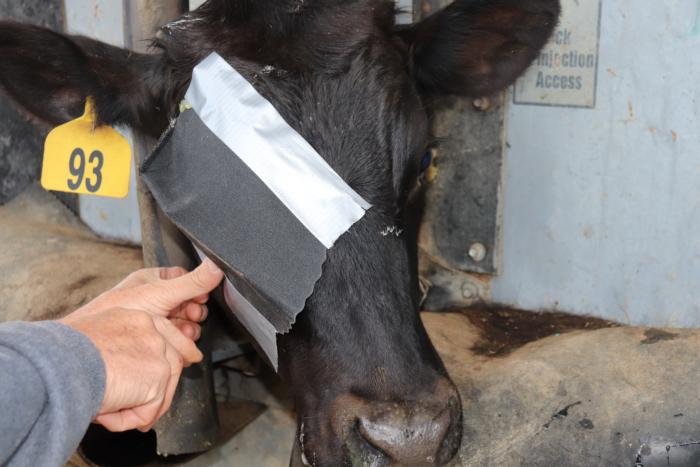Researcher Spotlights
Gaby Maier
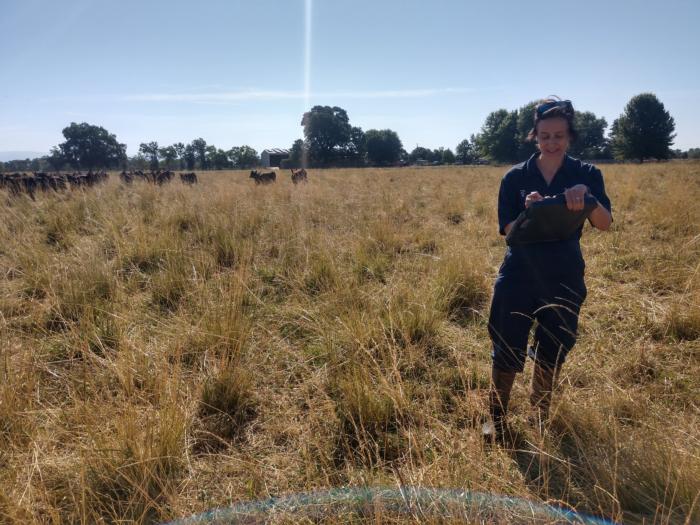
Gaby Maier is an Assistant Professor in Cooperative Extension at UC Davis. She conducts research at Sierra Foothill REC.
What led you to become a veterinarian?
I am from Germany and my uncle was a rural veterinarian there. When, as a kid, I spent a vacation at my uncle’s house, my first night there I saw him assist with a cow dystocia and was absolutely fascinated. He was my inspiration, but it took me a while to get around to fulfilling my dream of becoming a veterinarian. I have always been interested in where our food comes from and how to improve livestock agriculture while also protecting animal and human health. I’m also a bit of a nerd, so I love working with data and doing research. I have found a great niche in what I’m doing at UC Davis where I can combine all those passions.
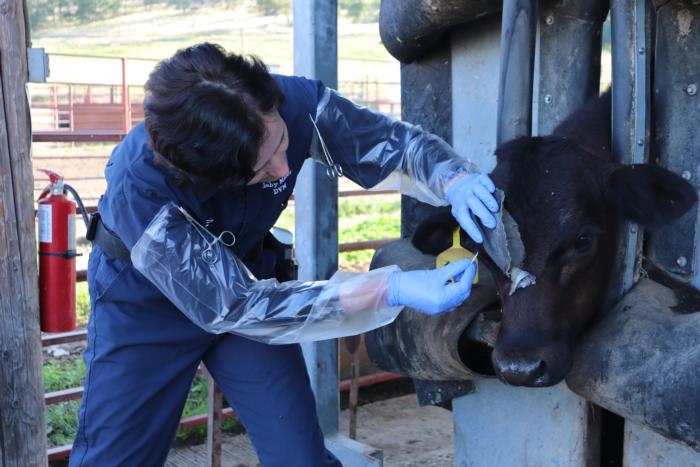
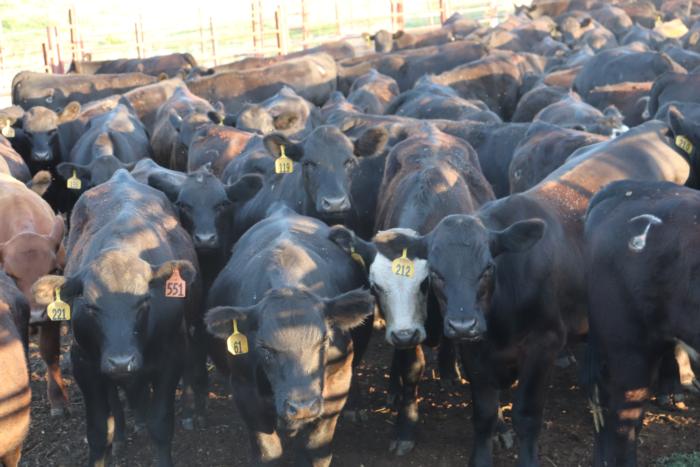
What brought your work to Sierra Foothill REC?
SFREC is the best place for me to work on research projects involving grazing cattle. It is within easy reach of the UC Davis campus, and the facilities and setup are perfect for my needs. Working with grazing beef cattle can be challenging because they are not as easily accessible as dairy cattle that can be caught in head catches while they eat. There are usually only a few times per year when cattle in a commercial beef herd are handled, and that can make it tough to enroll those herds in studies when you need to collect more than one data point per animal. The main priority for the herd at SFREC is to support research needs. And while all research protocols have to be approved by the Institutional Animal Care and Use Committee to ensure ethical conduct of animal research, working with cattle at SFREC is a lot more flexible than what could be expected elsewhere.
What do you hope to learn from your research at Sierra Foothill REC?
I am involved in multiple studies at SFREC. For example, we concluded a study that evaluated the use of eye patches for the treatment of an infectious ocular disease in cattle called pinkeye. Many ranchers patch affected eyes, usually with old denim, but no data was available on whether this treatment actually makes a difference. We found that patched eyes do heal faster and the ulcer that develops in affected eyes shrinks more quickly.
We are also comparing the use of different deworming regimens in young calves and their effect on weight gain and parasite load. Resistance of intestinal parasites to commonly used dewormers is becoming more and more of an issue in all livestock species. We typically think of the southeastern US with high humidity as a place where parasites can become a problem, but evaluating whether we see any indication of this trend locally will be important to be able to take any timely corrective actions.
Finally, we are studying the use of a feed additive, monensin, to determine the best dose of this compound in a mineral mix delivered to growing steers on pasture to maximize production. Monensin has many uses, and one of its benefits is to change the rumen flora to a more energy-efficient profile while also reducing methane production. We are in our third year of data collection for this project to account for varying pasture conditions due to the fluctuations in precipitation we experience in California.
By the way, when I say “we” it’s not the royal we; I have a lot of support for all those projects from collaborators and students without whom none of it would be possible.
What is your favorite part about conducting your research at Sierra Foothill REC?
Hands down, it’s the staff at SFREC I have been working with. I couldn’t wish for a more dedicated group to support our projects. They always go the extra mile, they understand the importance of collecting good data, they are absolutely invested in providing the best animal care, and most importantly, they are fun to work with. Apart from that, it’s a beautiful place in the Sierra foothills (hence the name), the facilities are good, and it’s always great to get out of the office.
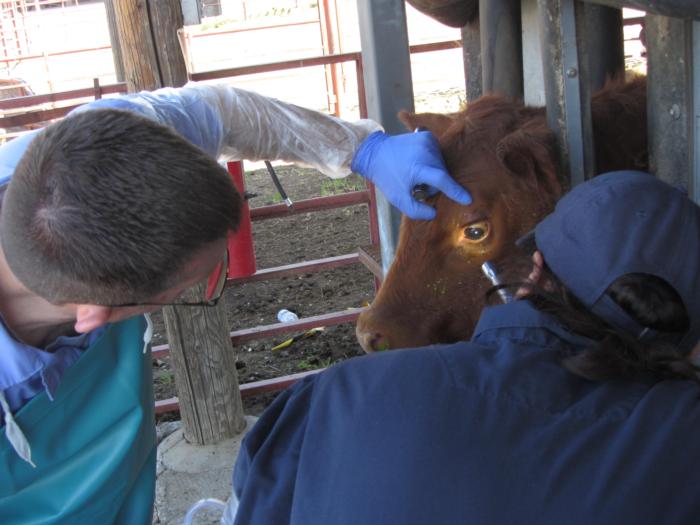
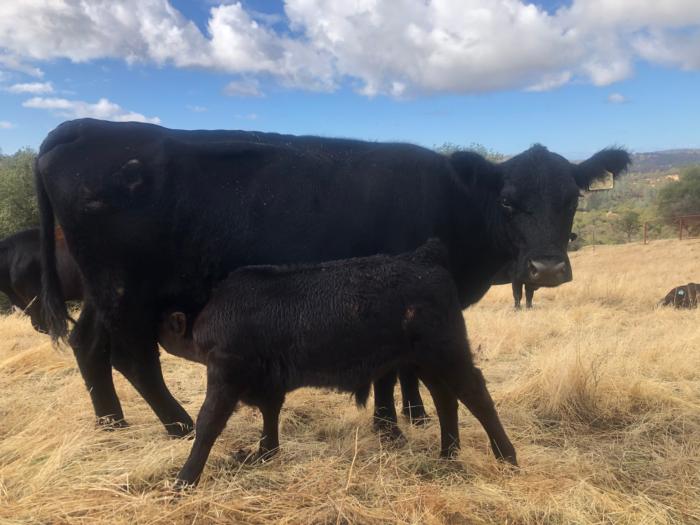
What is your favorite animal and why?
Of course, I have to say it’s cows. They are just amazing – they provide us with so much: milk, cheese, many other dairy products, meat, leather, products used in research like fetal calf serum for cell culture. Their physiology is amazing, a dairy cow can make over 100 lbs of milk a day, and they convert cellulose into energy, which we cannot. While there are a few mean and crazy cows out there, often they have a calm demeanor. During the pandemic, businesses started that charged for letting people hug a cow. While this may seem a bit funny, I can understand the comfort that it may have provided to those who paid for the service. Who wouldn’t want to hug a cow? Having said all this, I have a pet chicken, Gonzilla, that I also like a lot.
